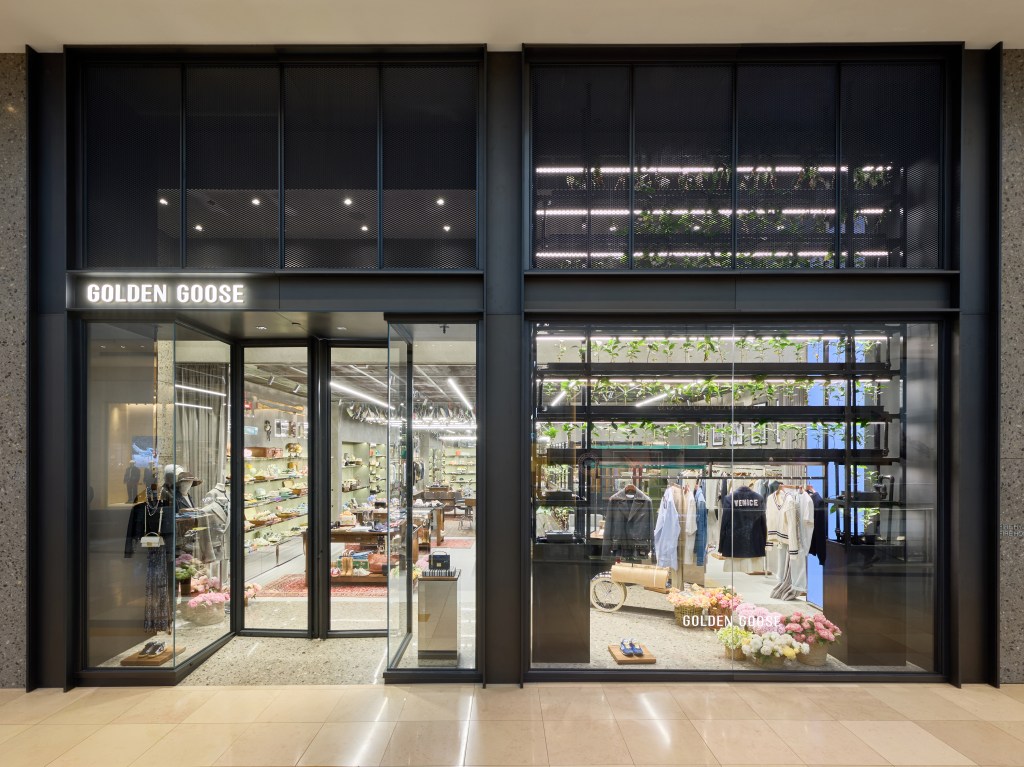They’re scuffed, scraped, and sometimes duct-taped – but Golden Goose sneakers continue to command four-figure price tags and global demand. What began as a niche idea in Venice has grown into one of the most iconic (and profitable) niche sneaker concepts in modern luxury retail.
This story featured in Issue 18 of Forbes Australia. Tap here to secure your copy.

In 2024, Golden Goose generated €654.6 million (A$1.07 billion) in net revenue, up 13% year-on-year. The company closed the year with 215 stores worldwide, including new locations in Rome, New Delhi, Mexico City, Bangkok and, more recently, Melbourne.
Since launching its first pair of deliberately distressed sneakers in 2007, the brand has built a cult following and a serious business. Sneakers now account for roughly 90% of sales.
Founded in Venice in 2000 by Francesca Rinaldo and Alessandro Gallo, Golden Goose started with boots and ready-to-wear. Sneakers weren’t part of the initial plan.
“[They] really weren’t part of the original vision,” Chief Brand Officer Marco Neroni, covered in Golden Goose gear from head-to-toe, tells me during a tour of the company’s Milan headquarters.
“We started with boots, and the approach we used to design Texan boots – referencing things that inspired us, like vintage or personal treasures – was something we eventually translated into sneakers.”



The company’s Super-Star sneaker, released in 2007, became the turning point. “We wanted to create a sneaker that looked like it already belonged to you,” Neroni said. “Not a product from a luxury house, but something you already had memories with.”
Celebrity exposure has helped fuel the brand’s ascent. Chris and Liam Hemsworth, Beyoncé, Michael Phelps, Patty Mills, Pink, Jacob Elordi, Naomi Watts and Millie Bobby Brown have all been photographed in a pair – most without any formal brand partnership. “Our product spoke for us,” Neroni said.
“For more than 20 years, we let the sneakers tell the story.”
Marco Neroni, Chief Brand Officer
Each pair is hand-finished in Italy. Brushes, abrasives and hand tools are used to replicate wear patterns, with no two pairs identical. “There’s a lot of technique behind those scars and signs,” Neroni said. “It’s not about destroying a shoe. It’s a manual process that takes time and skill.”
Golden Goose doesn’t compete on speed or scale. The brand limits its core silhouettes and differentiates through colour, materials and co-creation services. “We don’t chase innovation for its own sake,” Neroni said. “We focus on a few core models and build depth through variety.”
That restraint hasn’t slowed growth.
A majority stake was acquired in 2013 by DGPA SGR, bringing in new leadership, including Silvio Campara, who became CEO. Campara made sneakers the focus and moved the business toward a direct-to-consumer model. In 2020, private equity firm Permira acquired the brand. Two years later, Blue Pool Capital, the family office of Alibaba’s Joe Tsai, took a minority stake.
Golden Goose now operates in more than 65 countries. Regional revenue splits in FY24 were led by EMEA (48%), followed by the Americas (40%) and APAC (12%). DTC retail grew 23%, supported by strong digital traffic and high single-digit like-for-like store growth.


In 2023, the company was preparing for an IPO in Milan with a valuation expected to exceed €2.5 billion. That listing was postponed due to market volatility. “We decided it wasn’t the right moment,” Neroni said. “But our numbers have kept growing, and we’re not in a rush. Whether or not we go public, we operate like a listed company.”
Sneakers dominate, but the business has broadened. Apparel now makes up about 8% of revenue, while accessories and co-creation services contribute around 20%. Golden Goose also introduced new models in 2024 – the Lightstar, launched in Asia, and the Forty2, which debuted in Paris.
Co-creation has become a defining feature. The brand’s Forward Stores – active in cities like Milan, New York and Melbourne – allow customers to customise sneakers with in-store artisans.
“You’ll find exclusive colourways only available in specific locations. And if that’s not enough, you can personalise your pair,” Neroni said. Online shoppers can book video sessions with artisans at the brand’s workshop in Veneto.
Neroni says the goal is to position Golden Goose as an “experiential brand” – a label that’s more about participation than product.
“We don’t want to be seen as just a sneaker brand,” he said. “In five years, we want people to think of us as the brand where you make your own item. That’s the direction we’re going.”
Look back on the week that was with hand-picked articles from Australia and around the world. Sign up to the Forbes Australia newsletter here or become a member here.



